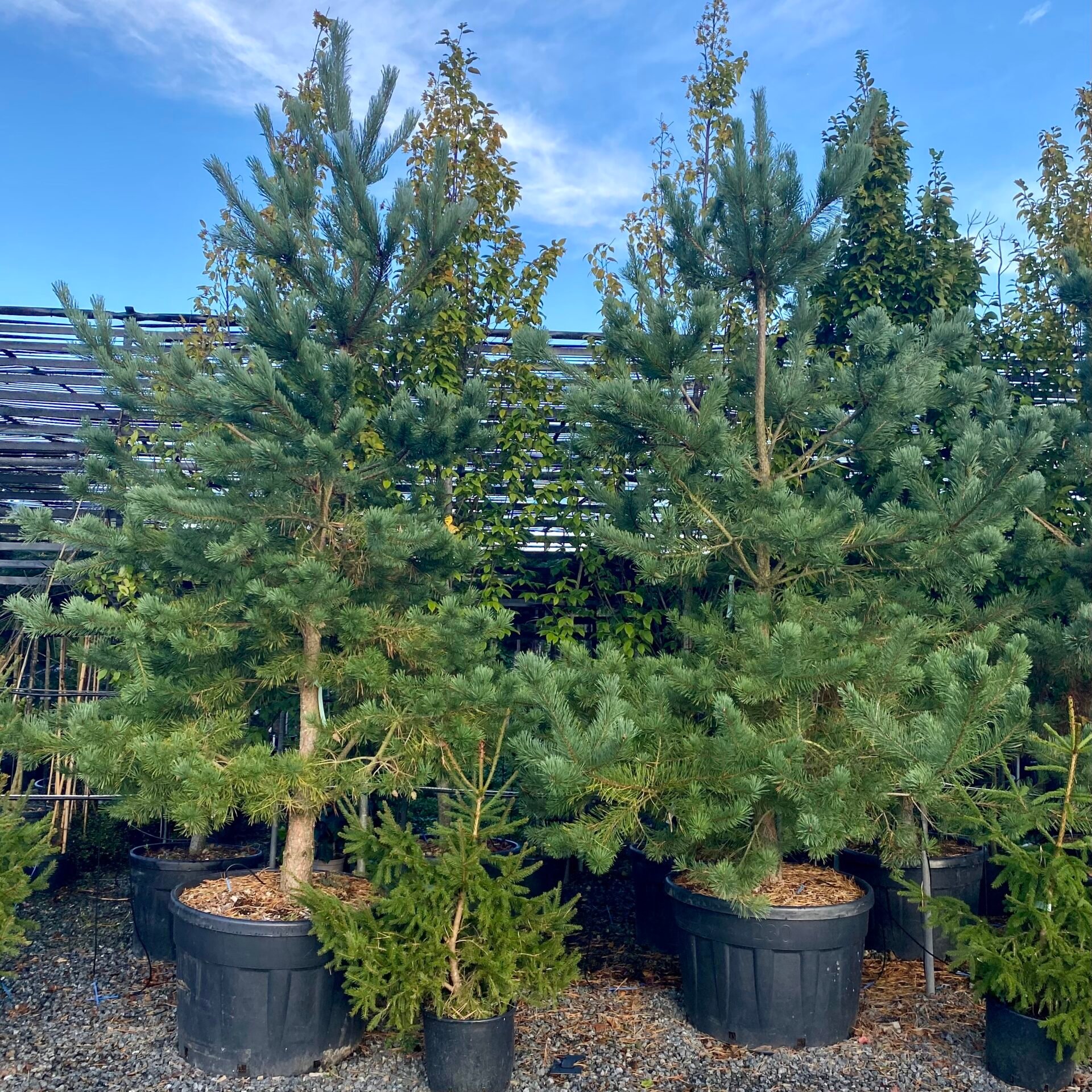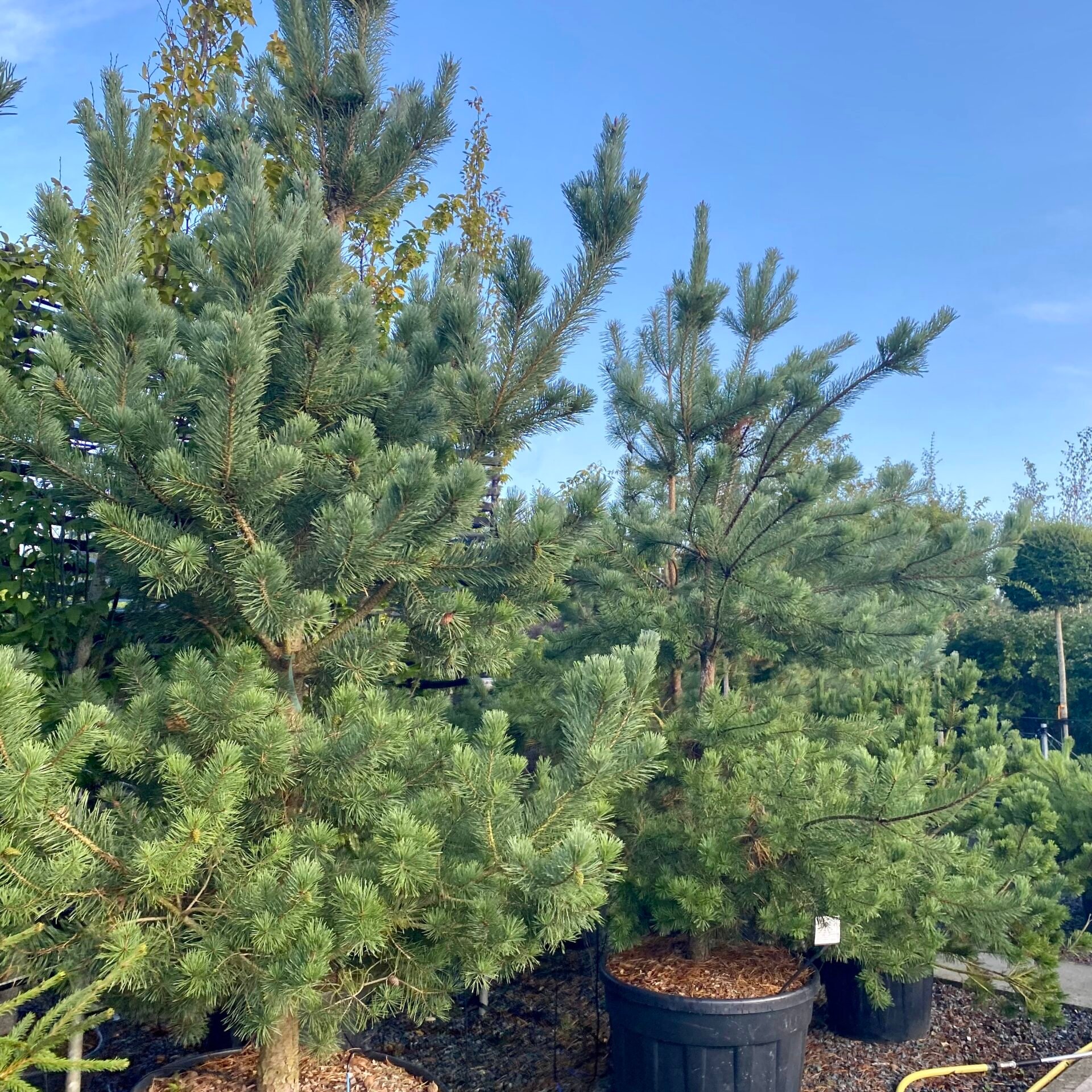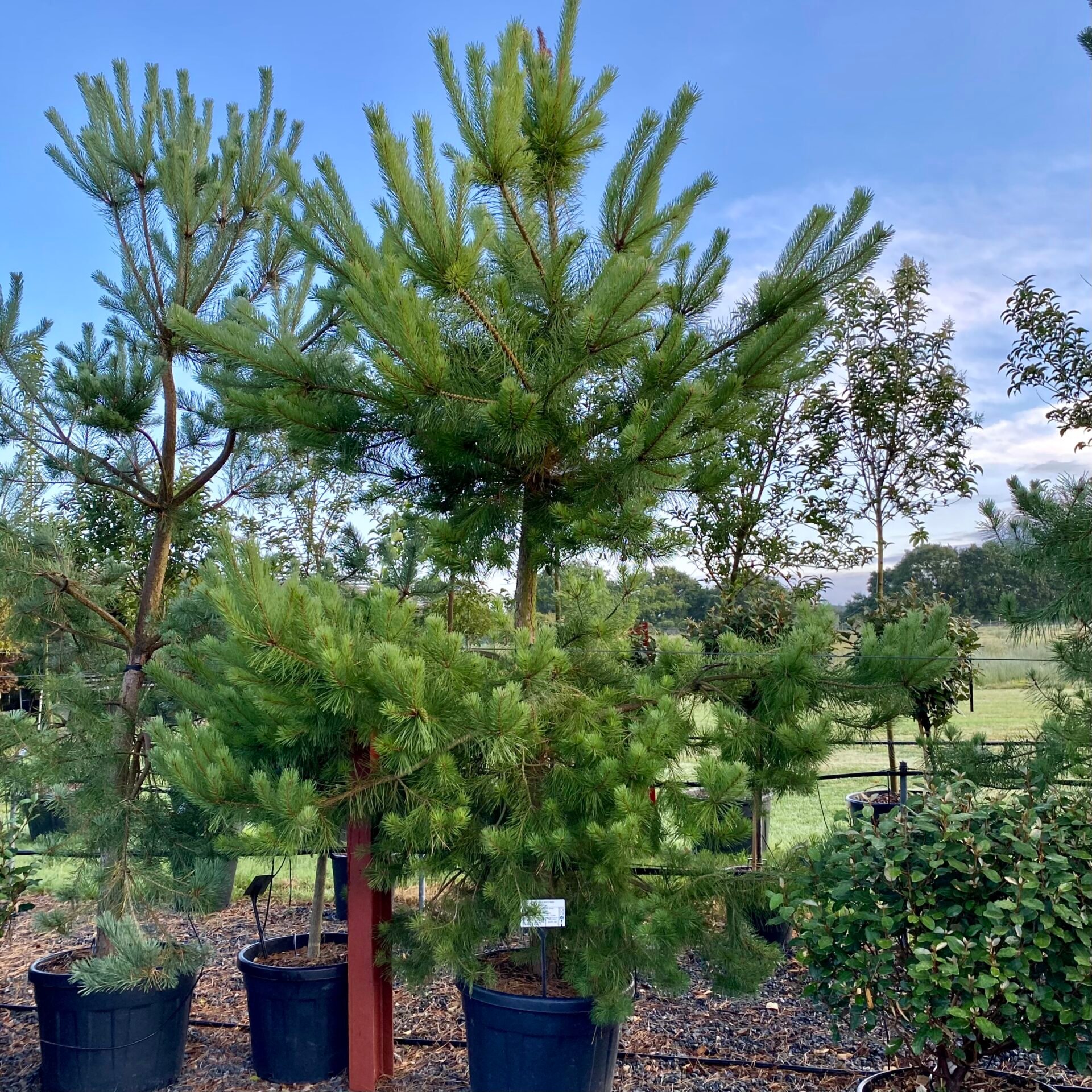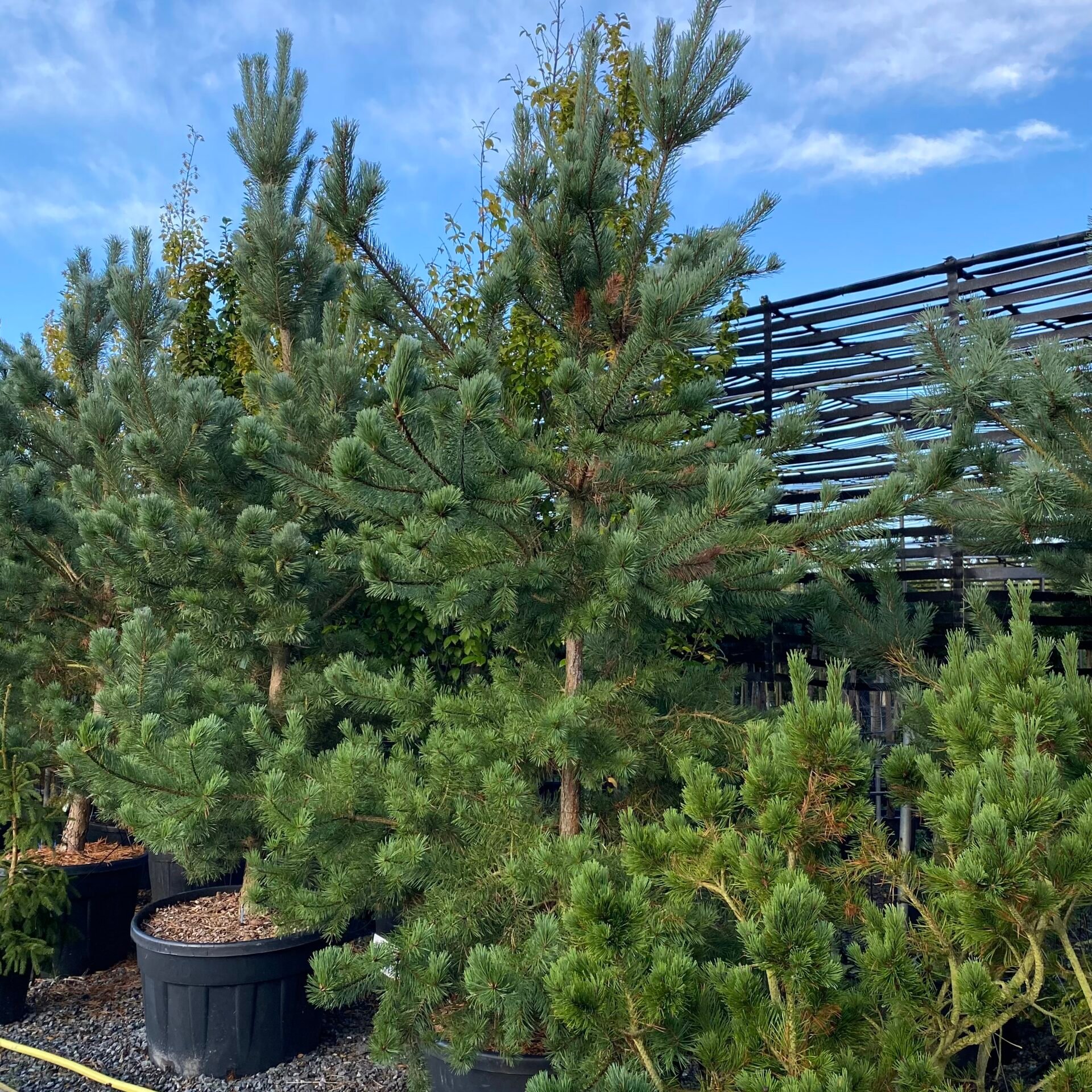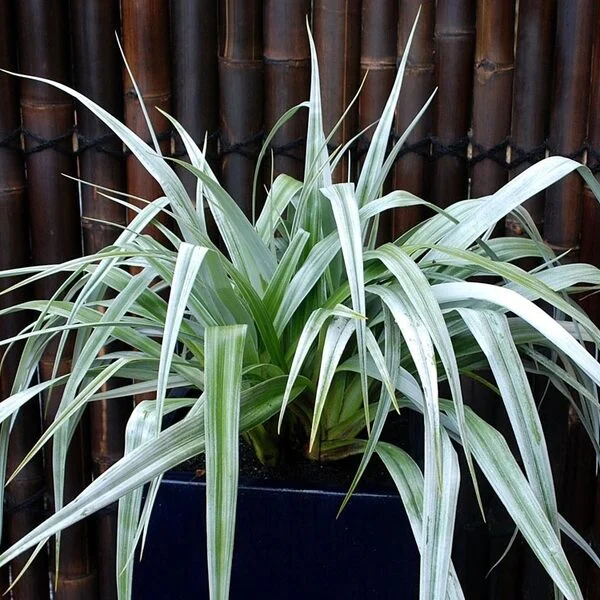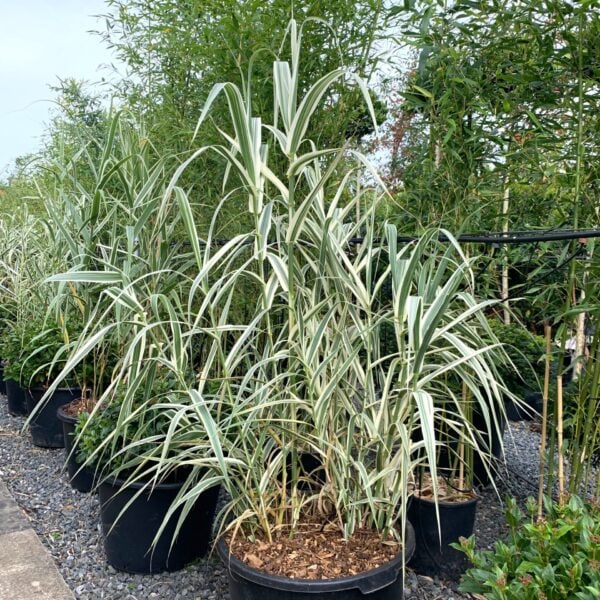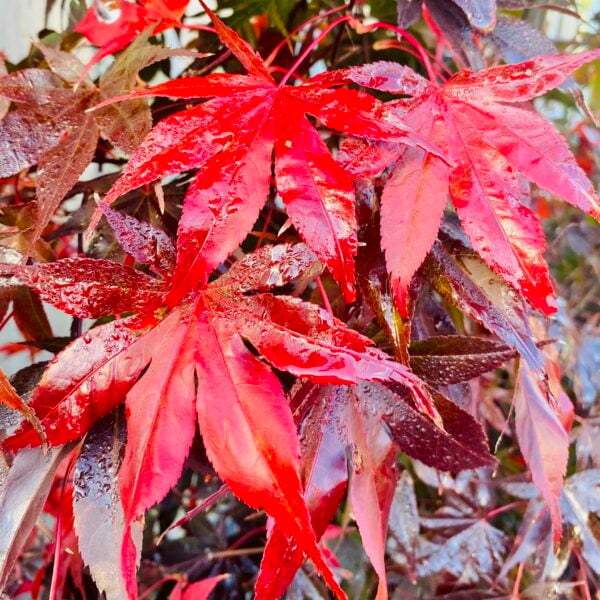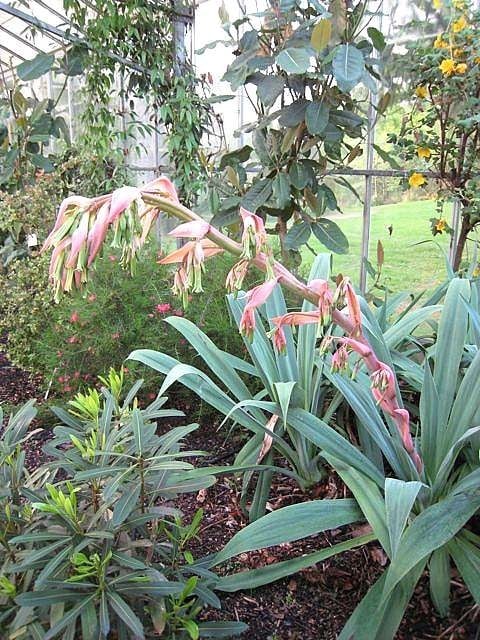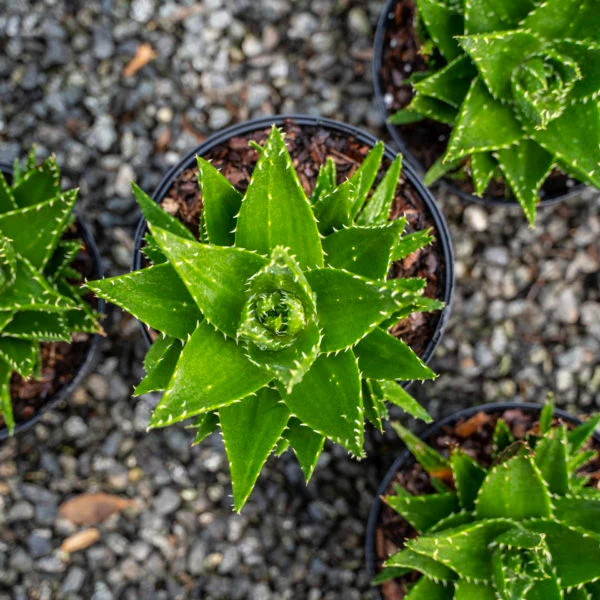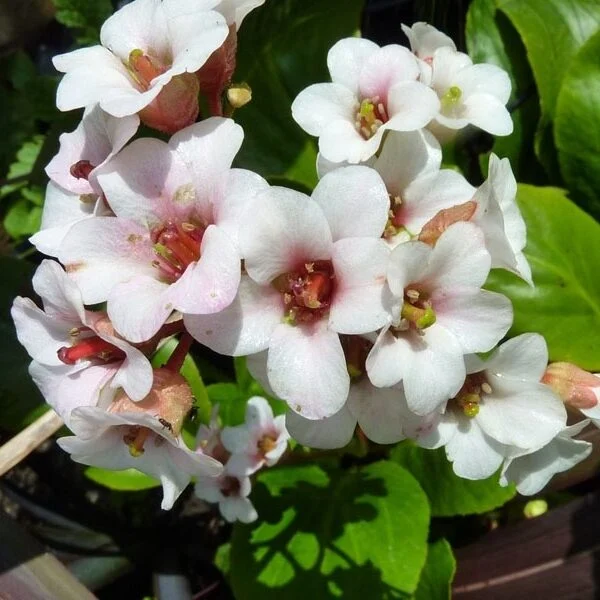Pinus sylvestris .
From 395.00 incl. VAT
A familiar part of the British landscape with its blue/grey needles, orangey bark and sculptural shape. A mature one of these, growing on its own, is one of the world’s most beautiful things. Please contact us for stock availability and sizes.

Hardiness level Green
With its glaucous (bluey grey) needles (leaves), it's sculptural shape (when mature) and the orangey bark near the top, this is one of the most instantly recognisable trees in the world and we're lucky enough to call it native. It's widespread throughout Europe and Western Asia but it is native to parts of Scotland.
As with virtually all conifers, it starts life as an unremarkable cone shaped Christmas tree but as it matures, it loses its lower branches and can form the most outstandingly beautiful shapes and if it's growing alone and the evening, light catches the orange bark near its summit. One could be excused for gawping in wonder, dribbling slightly and uttering incoherent whining noises as you revel in the sight of this wonder of nature. All pines do this mature/shape thing but somehow the Scots Pine does it best.
Its native habitat is vast and as in all such cases, it's genetically variable. Various dwarf forms are available and are given to the development of Niwaki, Multi-Stemmed Blobs and other such horticultural delights.
The normal tree can take 40 years (at least) to reach 35ft when it might begin to take on some character. It's a common timber tree and - of course - when grown as such will be in closely grown stands, straight as an arrow and will not take on the character displayed when grown as a single specimen.
They're found growing close to the arctic circle in Siberia and therefore their frost hardiness in Britain is beyond dispute.
Propagated by seed.
N.B. When clipping several plants with the same tool, have a bucket containing a 5% bleach solution and swish your blades around for 30 seconds between plants to sterilise them. This will help avoid the chance of cross contamination of disease.
As with all woody plants, plant high, exposing as much of the taper at the base of the trunk as possible. Allowing soil to accumulate round the base of a tree can be fatal. Keep very well watered when first planted.
Additional Information |
|
|---|---|
| Size | (H1.8-1.9m, W1.4-1.5m), 110L (H3.6-4.2m, W2.2-2.8m) S58cm-1m, G24-25cm, 130L (H2.8-3.5m, W1.8-2.3m) S30-40cm, G17-20cm |
| Soil Type | |
| Light | |
| Plant Type | |
| Continent of Origin | |
| Specialist Plants | |
| Tree Size | |
| Situation | Coastal, Exposed (To wind and sun), Mild City Gardens, Seaside, Sheltered Garden |
| Hardiness | |
FAQs
How fast does Pinus sylvestris grow?
Can take 40 years (at least) to reach 35ft
How do you take care of Pinus sylvestris?
Pinus sylvestris is very hardy. Frost hardy without a doubt. Happy in most well-drained soils: clay, dry / well drained, sandy, shingle or beach. Plant high, exposing as much of the taper at the base of the trunk as possible. Allowing soil to accumulate around the base of a tree can be fatal. Keep very well-watered when first planted. It’s genetically variable. So, what to expect, or what you want to achieve with this plant can differ when taking care of it. Various dwarf forms are available and are well-suited to developing into Niwaki, Multi-Stemmed Blobs and other such horticultural delights. The ‘normal’ tree starts life as an unremarkable cone shaped Christmas tree but as it matures, it loses its lower branches and can form the most outstandingly beautiful shapes – if you can wait that long. So we suggest you purchase a more mature specimen to begin with.
How tall does Pinus sylvestris grow?
Over 30ft. 40 years to reach 35ft.
Do Pinus sylvestris prefer sun or shade?
Full sun.
Is Pinus sylvestris an indoor or outdoor plant?
Outdoor.





